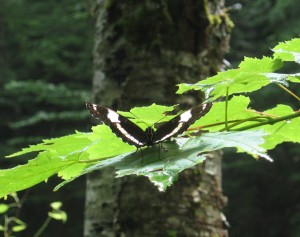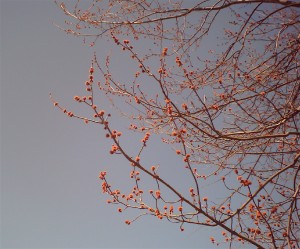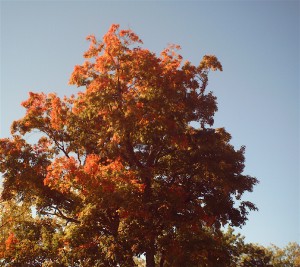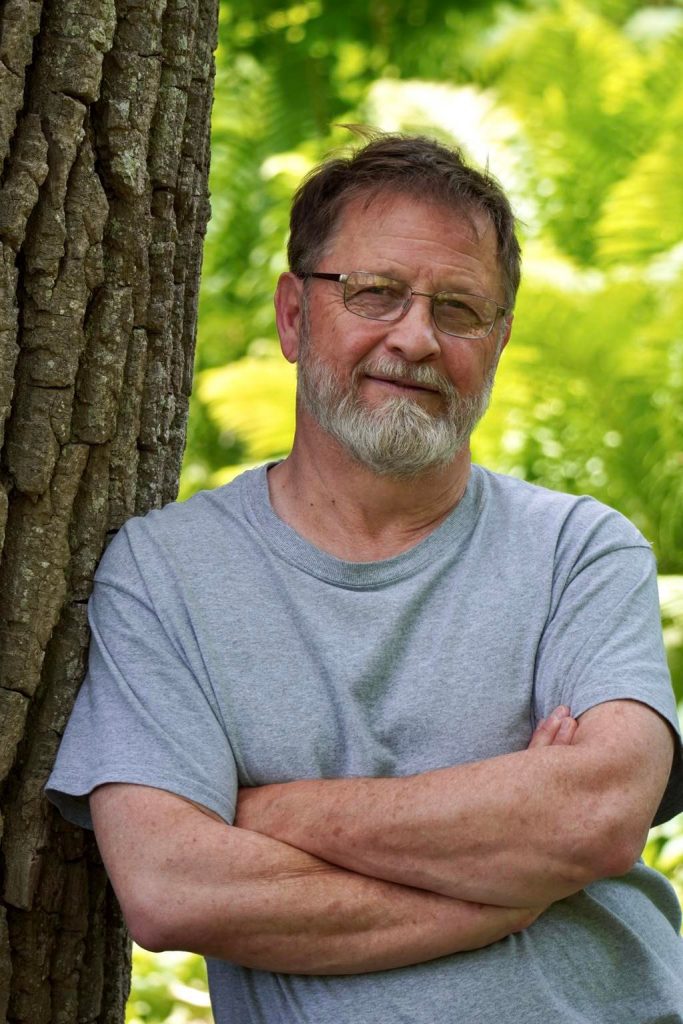Apr 28 2012
100-year-old Tree
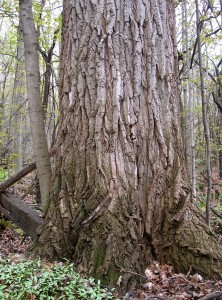 Despite the specks of white tumbling from an overcast sky, I went for a hike up Aldis Hill. I had the place all to myself, of course. No one else was foolish enough to come out on such a nasty day.
Despite the specks of white tumbling from an overcast sky, I went for a hike up Aldis Hill. I had the place all to myself, of course. No one else was foolish enough to come out on such a nasty day.
Shortly after entering the woods, I noticed a big, old maple near the trail – one I hadn’t seen before. Then I kept moving. I was more interested in early spring wildflowers and knew just where to find them.
Amid a pile of large rocks, I spotted the leaves of bloodroot. The petals had been blown clear by the strong April wind. Just beyond the rocks, wild ginger. Trilliums, violets and blue cohosh bloomed along the flat section of trail between the lookout and the summit. Near the summit, I visited a thick patch of Dutchman’s breeches surrounded by trout lilies, hepatica and spring beauty. I got down on my knees and snorted the fragrant spring beauty the last time I was here. Good thing I did so. Today they were closed tight against the weather.
I looked around for more wildflowers while finishing my hike but nothing new cropped up. That’s when I started thinking about that big, old maple I had passed earlier. How long had it been there? Why was it still standing? More to the point: Why hadn’t I noticed it before? I gave it a quick nod before leaving the woods.
A half hour later, I returned to Aldis Hill to take a picture of that tree. I stretched my arms around its trunk to measure its girth. I couldn’t reach halfway around the giant. Stepping back, I took a good, long look at it. The tree had to be a hundred years old at the very least. And still going strong. I shook my head, wondering what else I hadn’t seen in this small pocket of woods during my countless walks here. Sometimes, I swear, it feels like I’m sleepwalking – even when my eyes are wide open.

